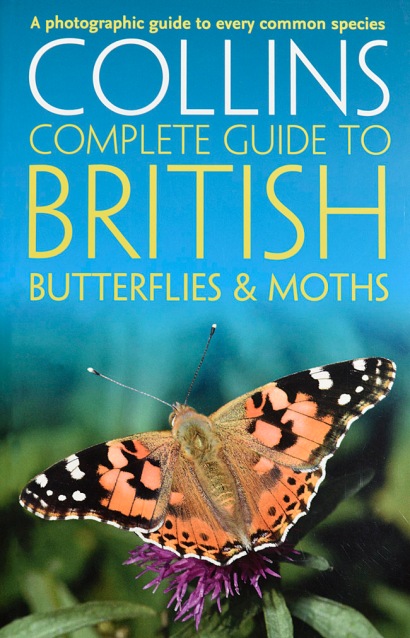Clearwings are the most atypical and enigmatic of moths. Although day-flying, they are incredibly hard to spot being shy and wary (if an insect can be called such a thing) and seem to actively avoid people. As the group’s name suggests their wings are largely devoid of scales in most species, and all have markings and behaviour that gives them more than a passing resemblance to various species of wasp. The mimicry is an evolutionary ploy of course and serves as a deterrent to potential predators.
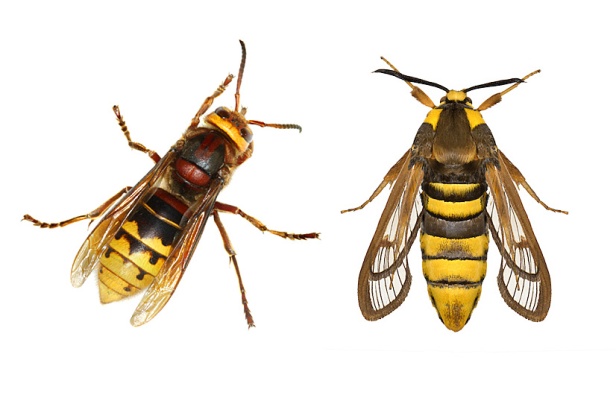 Above: Creatures such as this Hornet (left) advertise that they are not to be messed with using striking warning colours; biologists call these markings ‘aposematic’. The harmless Hornet Moth (right) cashes in on this by using mimicry: not only does it look similar to a Hornet, but when disturbed it buzzes and flexes its body in a truly convincing way. Paul Sterry/Nature Photographers Ltd
Above: Creatures such as this Hornet (left) advertise that they are not to be messed with using striking warning colours; biologists call these markings ‘aposematic’. The harmless Hornet Moth (right) cashes in on this by using mimicry: not only does it look similar to a Hornet, but when disturbed it buzzes and flexes its body in a truly convincing way. Paul Sterry/Nature Photographers Ltd
Previous generations of lepidopterists in search of clearwings were forced to search for larvae – a daunting task since, depending on species, they live inside trees stems, form galls in twigs or are subterranean. Fortunately for the 21st Century clearwing obsessive things are a bit easier and male moths at least have an Achilles heel. As with many other moth species, female clearwings emit airborne sex-attractants known as pheromones to which males of the same species are attracted. Instead of travelling around with pet female clearwings, the modern naturalist can employ a more underhand approach: artificial pheromones can be purchased and although their efficacy varies considerably, with a few species the results are impressive. However, pheromone-luring is a bit of a dark art – nobody really knows why it works on some days but not others. But for enthusiasts, that’s all part of the frustrating allure.
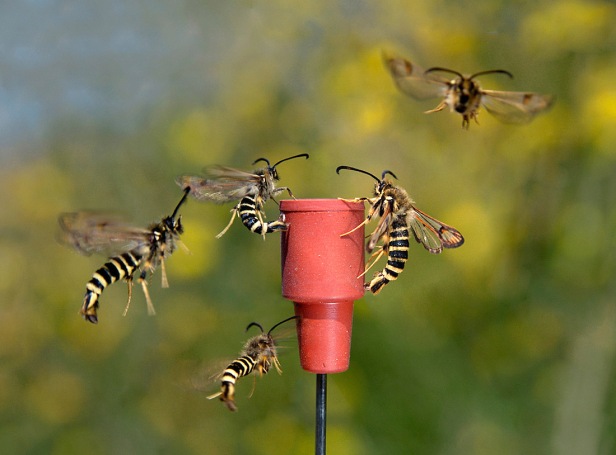 Above: Pheromone lures are often impregnated into rubber bungs. For some species, the results are unpredictable but for the Six-belted Clearwing they can be spectacular (relatively speaking). Of course, it is only males that are attracted to the lures. Paul Sterry/Nature Photographers Ltd
Above: Pheromone lures are often impregnated into rubber bungs. For some species, the results are unpredictable but for the Six-belted Clearwing they can be spectacular (relatively speaking). Of course, it is only males that are attracted to the lures. Paul Sterry/Nature Photographers Ltd
For lovers of moths, there is a sad irony behind the development of pheromone lures. Forget the notion of men in white coats formulating pheromones purely for the delight of a handful of entomologists. No, artificial lures are developed commercially to catch (and subsequently kill) those clearwing species that are considered commercial pests of crops elsewhere in the world. It just so happens that these lures are not entirely specific and work for our native species too.
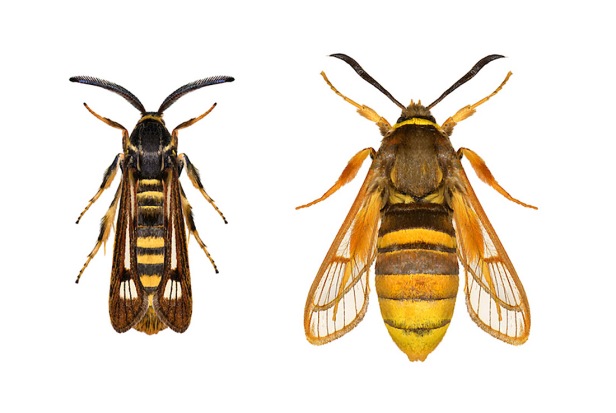 Above: Raspberry Clearwing (left) is a relatively recent arrival to Britain and a species for which lures were developed for commercial reasons. The Lunar Hornet Moth (right) is one of those species for which no lure, or combination of lures, appears to work. Paul Sterry/Nature Photographers Ltd
Above: Raspberry Clearwing (left) is a relatively recent arrival to Britain and a species for which lures were developed for commercial reasons. The Lunar Hornet Moth (right) is one of those species for which no lure, or combination of lures, appears to work. Paul Sterry/Nature Photographers Ltd
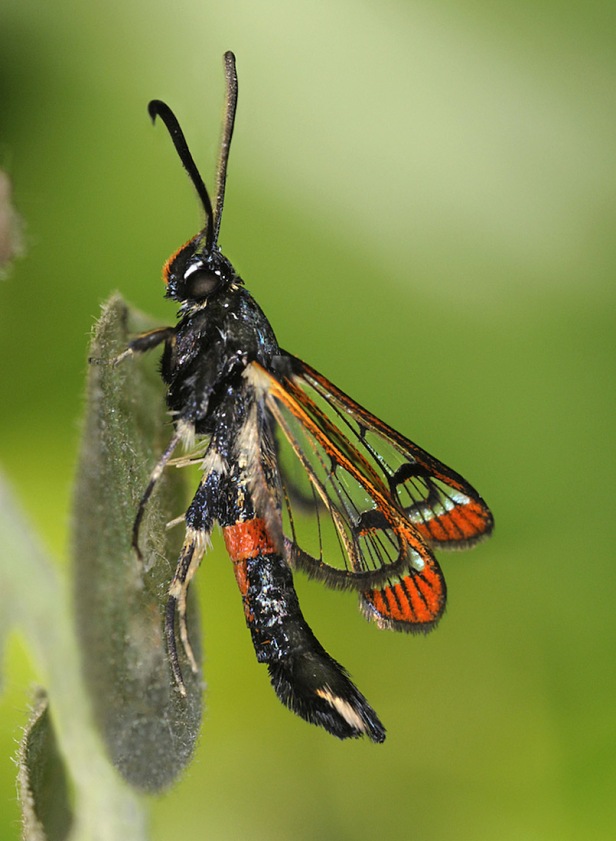 Above: The Red-tipped Clearwing is associated with willow and sallow scrub, typically where Crack-willow (the typical larval foodplant) flourishes. Paul Sterry/Nature Photographers Ltd
Above: The Red-tipped Clearwing is associated with willow and sallow scrub, typically where Crack-willow (the typical larval foodplant) flourishes. Paul Sterry/Nature Photographers Ltd
Regardless of the history behind the creation of lures, for a select and dedicated band of moth-enthusiasts it’s that time of year again: the clearwing season has begun. So keep your eyes open and you may spot people staring intently into bushes in which pheromone lures have been suspended in muslin bags. But without the aid of a lure, you have more chance of spotting an enthusiast than a clearwing.


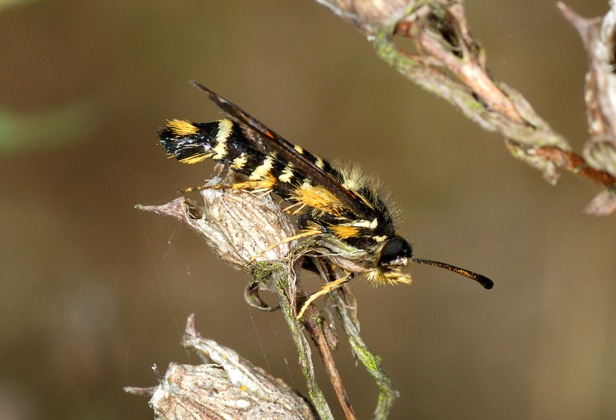 Above: The Six-belted is one of the few clearwing species where you stand a good chance of seeing one in the field without the aid of lures. They favour close-cropped turf where Bird’s-foot Trefoil is abundant (their subterranean larvae feed on its roots) and both males and females can be spotted resting on low vegetation. Paul Sterry/Nature Photographers Ltd
Above: The Six-belted is one of the few clearwing species where you stand a good chance of seeing one in the field without the aid of lures. They favour close-cropped turf where Bird’s-foot Trefoil is abundant (their subterranean larvae feed on its roots) and both males and females can be spotted resting on low vegetation. Paul Sterry/Nature Photographers Ltd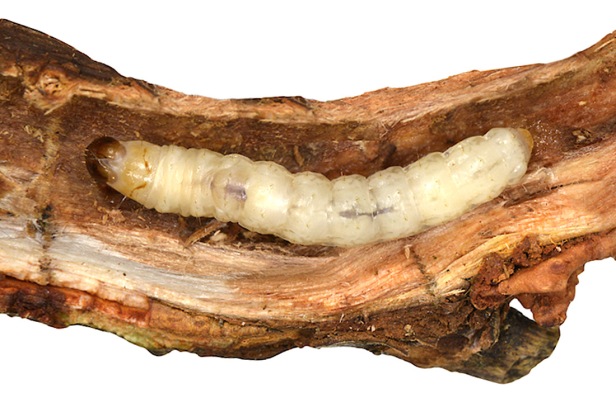 Above: It is no wonder that clearwing larvae are seldom encountered since many live inside the stems or trunks of trees and shrubs. This White-barred Clearwing larva was discovered inside an Alder stem during conservation coppicing. The stem was ‘repaired’, the larva reared in captivity, and the emergent adult subsequently released. Paul Sterry/Nature Photographers Ltd
Above: It is no wonder that clearwing larvae are seldom encountered since many live inside the stems or trunks of trees and shrubs. This White-barred Clearwing larva was discovered inside an Alder stem during conservation coppicing. The stem was ‘repaired’, the larva reared in captivity, and the emergent adult subsequently released. Paul Sterry/Nature Photographers Ltd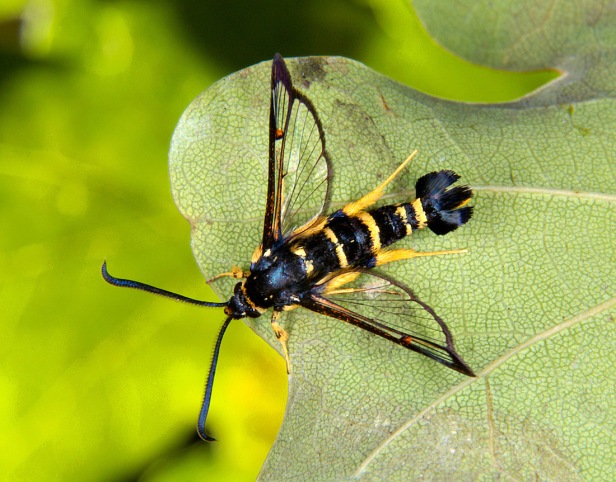 Above: Yellow-legged Clearwings are associated with oaks and can sometimes be found investigating cut stumps and broken branches, sites where eggs might be laid. Paul Sterry/Nature Photographers Ltd
Above: Yellow-legged Clearwings are associated with oaks and can sometimes be found investigating cut stumps and broken branches, sites where eggs might be laid. Paul Sterry/Nature Photographers Ltd Above: The Holy Grail for clearwing enthusiasts is the Fiery Clearwing, a species associated with patches of coastal sorrel (roots of which are the larval foodplant). On sunny days, adults are fairly obvious if you know where to look… Paul Sterry/Nature Photographers Ltd
Above: The Holy Grail for clearwing enthusiasts is the Fiery Clearwing, a species associated with patches of coastal sorrel (roots of which are the larval foodplant). On sunny days, adults are fairly obvious if you know where to look… Paul Sterry/Nature Photographers Ltd